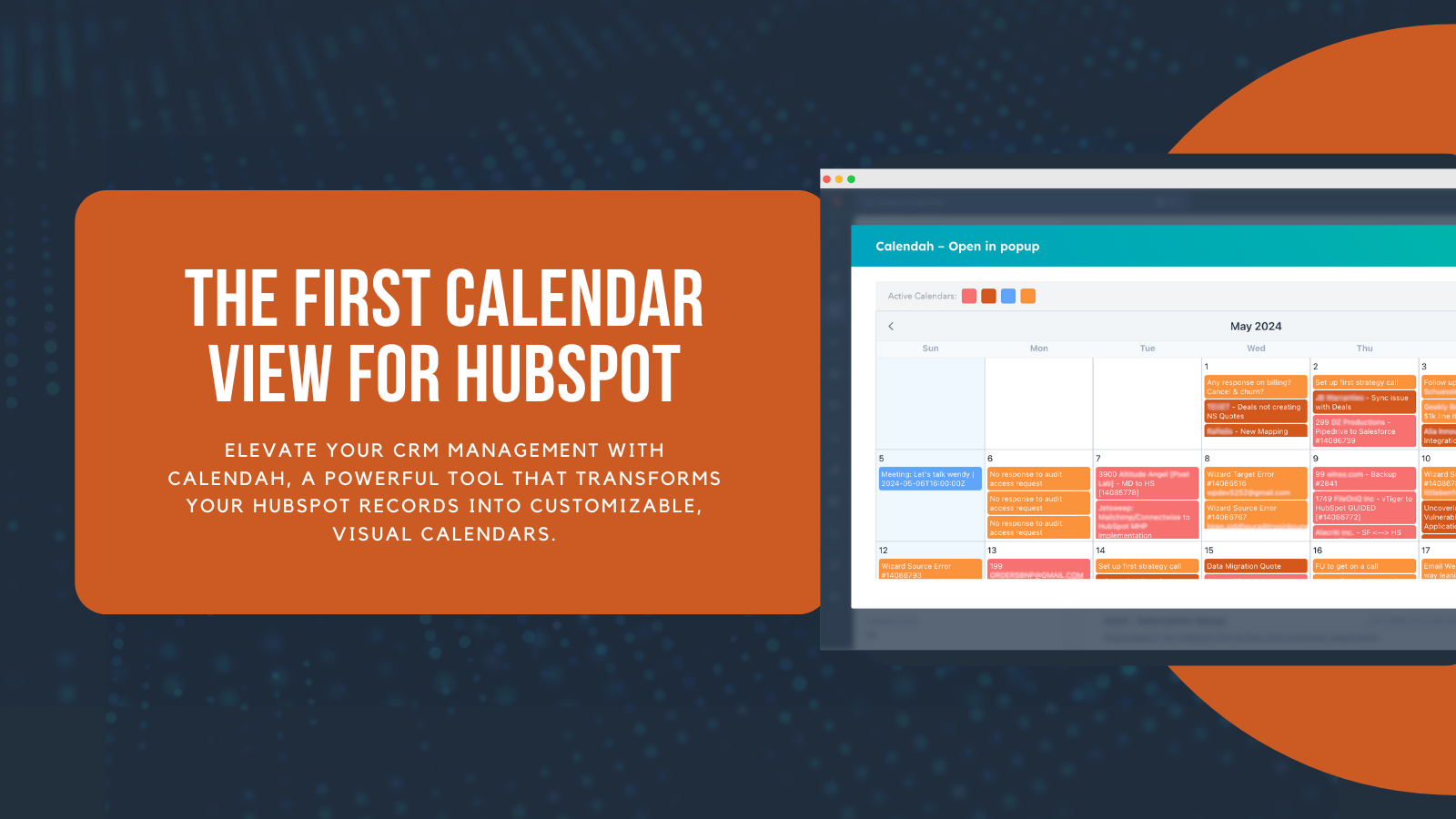Table of content:
- Exporting Data to a New CRM
- Essential Data to Migrate
- Preserving Activity History
- Minimizing Downtime During Cutover
- Key Features for Your Business
- Required Integrations
- Budget for Licensing and Migration
- Team Usability and Adoption
- When will Zendesk Sell officially be retired?
- Which CRM is the easiest replacement for Zendesk Sell?
- How can I migrate all my data without losing history?
- Which Zendesk Sell alternative best fits small vs large teams?
- Do Zendesk Sell alternatives support email, phone, and marketing integrations?
Best Zendesk Sell Alternatives: Top CRM Replacements
As Zendesk Sell reaches its sunset, many sales teams are actively searching for a reliable Zendesk Sell alternative to keep their pipelines running smoothly. Whether your priority is keeping workflows as unchanged as possible, ensuring your team can adapt quickly, or preserving existing integrations, choosing the right CRM can set your business up for long-term success. In this comprehensive guide, we’ll explore the best options on the market and help you find the perfect fit for your team.
Why You Need to Look for a Zendesk Sell Alternative Now
For years, Zendesk Sell was a go-to CRM for sales teams looking for simplicity, clean design, and tight integration with customer support tools.
However, with Zendesk officially discontinuing its Sell product, the reality is clear: businesses must begin exploring Zendesk Sell alternatives. This transition isn’t just about swapping software—it’s about safeguarding your sales data, maintaining workflow continuity, and preparing your team for a smoother, more powerful CRM experience.
Below, we’ll break down the timeline, the risks of delaying migration, and why early action pays off.
Zendesk Sell Sunset Timeline
Zendesk announced that it would sunset Zendesk Sell in phases, giving users a limited window to export their data and transition to a new platform.
As of 2025, maintenance is limited to basic functionality. Integrations may already begin to fail as APIs evolve. The Zendesk team itself has encouraged users to explore alternatives to Zendesk Sell, even recommending Pipedrive as one of migration paths.
Risks of Delaying the Move
Delaying migration might feel harmless at first—after all, if Zendesk Sell still “works,” why rush?
However, among the rising risks of delaying the switch are:
- Data instability.
- Loss of critical functionality.
- Security exposure.
- Costly downtime during migration.
- Team disruption.
Benefits of Early Migration
Moving early to one of the top Zendesk Sell alternatives puts your business in control of the transition—not the other way around.
Here are the key benefits of starting now:
- Smooth data transition.
- More time for testing.
- No disruption to active deals.
- Better pricing leverage.
- Early adoption of automation and AI tools.
Top Zendesk Sell Alternatives
As Zendesk phases out its sales CRM, many teams are now evaluating what comes next. Choosing the right alternative to Zendesk Sell isn’t just about replacing a tool—it’s about finding a platform that improves your automation, simplifies your workflow, and fits your team’s unique sales process.
Check out the best Zendesk Sell alternatives, from lightweight CRMs like Capsule to robust ecosystems like Salesforce and HubSpot below:
1. Pipedrive

When Zendesk announced the Sell sunset, their team recommended Pipedrive as a migration path for current users. That’s no coincidence—both tools share a similar philosophy: simplicity, visibility, and sales-focused workflows.
Pros:
- Easy drag-and-drop pipeline interface.
- Affordable and intuitive for beginners.
- Strong automation tools for repetitive tasks like follow-ups or lead assignments.
Cons:
- Limited customization compared to more advanced CRMs.
- Reporting features can feel basic.
- Not ideal for complex, multi-team environments.
If your sales process is straightforward and you value speed over deep customization, Pipedrive is one of the most practical Zendesk Sell CRM alternatives available today.
2. HubSpot

Among the best Zendesk Sell alternatives, HubSpot CRM stands out as one of the most complete and future-ready options. It’s perfect for teams that want a single platform combining sales, marketing, and customer support.
HubSpot offers a free plan with essential features, then scales up with paid tiers that introduce advanced automation, analytics, and AI-assisted tools.
Pros:
- Robust marketing and automation suite.
- Excellent dashboard and reporting system.
- Deep integrations with Gmail, Outlook, Slack, and other tools.
- Scalable—suitable for startups to enterprises.
Cons:
- Pricing increases sharply for advanced features.
- Can take time to fully onboard large teams.
For businesses that want to grow their pipelines and automate engagement migration from Zendesk Sell to HubSpot is an optimal solution.
3. Salesforce

If you’re looking for power, scalability, and deep customization, Salesforce remains the gold standard in the CRM world. It’s one of the most powerful alternatives to Zendesk Sell, offering advanced automation, detailed analytics, and endless integration options.
Pros:
- Highly customizable and extremely robust.
- Ideal for large teams and enterprise operations.
- Advanced automation and AI-driven insights.
- Strong ecosystem of integrations and add-ons.
Cons:
- Expensive compared to other CRMs.
- Requires time and expertise to implement.
Some users see Salesforce as “overkill” for smaller businesses, but for companies with dedicated sales operations and IT support, it’s a powerful alternative Zendesk Sell users can rely on.
4. Zoho CRM

Zoho CRM offers an excellent balance of affordability, functionality, and flexibility.
Pros:
- Great value for money.
- Powerful automation and AI tools.
- Customizable interface with multiple modules.
Cons:
- The user interface feels a bit dated.
- Support can vary depending on your region.
It’s ideal for small and medium-sized businesses looking for a solid CRM alternative to Zendesk Sell that offers advanced automation without the enterprise price.
5. Freshsales

Part of the Freshworks ecosystem, Freshsales is another strong alternative to Zendesk Sell CRM. It’s known for its clean design, built-in telephony features, and AI-powered lead scoring.
Pros:
- Integrated phone, email, and chat tools.
- AI-driven lead scoring and workflow automation.
- Good value for small to mid-sized teams.
Cons:
- Less flexible for large, complex setups.
- Some advanced reports require higher-tier plans.
6. Nutshell

Nutshell CRM is an underrated gem among the best Zendesk Sell alternatives. It’s built for growing B2B sales teams who need a balance between simplicity and functionality.
Pros:
- Straightforward setup and intuitive navigation.
- Helpful automation templates for sales outreach.
- Affordable pricing.
Cons:
- Limited integrations compared to bigger CRMs.
- May lack depth for enterprise-level requirements.
7. Monday.com CRM

Monday.com started as a project management tool, but its CRM version has quickly become one of the most flexible alternatives to Zendesk Sell on the market.
Pros:
- Highly visual and user-friendly design.
- Endless customization for pipelines, dashboards, and workflows.
- Excellent collaboration tools for cross-functional teams.
Cons:
- Can require manual setup to tailor to CRM needs.
- Reporting and automation options are still growing.
8. Capsule

Capsule CRM is another lightweight and affordable alternative to Zendesk Sell that works perfectly for small teams and service-based businesses.
Pros:
- Clean and minimalistic interface.
- Great for smaller teams.
- Integrates well with accounting and marketing apps.
Cons:
- Limited automation.
- Reporting tools are basic.
9. Copper

Built specifically for Google Workspace users, Copper CRM feels like Gmail with superpowers. It’s one of the easiest Zendesk Sell CRM alternatives to implement—no heavy onboarding required.
Pros:
- Deep integration with Google Workspace.
- Minimal setup and maintenance.
- Ideal for small and medium businesses.
Cons:
- Lacks advanced marketing features.
- Reporting customization is limited.
10. LeadSquared
Rounding out the list is LeadSquared, a feature-rich sales CRM built for automation-heavy workflows. It’s particularly strong in lead management, nurturing, and customer onboarding automation—great for high-volume sales teams or service businesses.
Pros:
- Excellent lead capture and nurturing automation.
- Strong reporting and analytics.
- Scalable for medium to large businesses.
Cons:
- The interface can feel busy for first-time users.
- More expensive than entry-level CRMs.
After choosing the best-fit CRM for your business, you’ll have to get down to the migration process. If you’re not sure where to begin, a migration expert, like SyncMatters, can help you. Our team ensures your migration process is smooth, accurate, and completely hassle-free—from exporting Zendesk Sell data to setting up your new CRM with zero downtime.
CRM Comparison Table
When exploring the best alternatives to Zendesk Sell, it’s helpful to see how each CRM stacks up in terms of pricing, features, and usability:
|
CRM |
Ideal for |
Advantages |
Disadvantages |
|
Pipedrive |
Small to mid-sized teams wanting a simple visual pipeline |
Easy setup, clean interface, affordable pricing, great for visual deal tracking |
Limited reporting and customization; lacks enterprise features |
|
HubSpot |
Growing businesses needing all-in-one CRM + marketing automation |
Seamless integration of sales, marketing, and support; advanced automation; powerful dashboard tools |
Costs rise quickly as you scale; onboarding large teams can take time |
|
Salesforce |
Enterprises and large sales operations |
Industry-leading automation, deep customization, powerful analytics |
Expensive; requires technical setup and dedicated admin support |
|
Zoho CRM |
Small and medium businesses needing flexible automation |
Strong AI features, customizable modules, great value |
User interface feels dated; inconsistent customer support |
|
Freshsales (Freshworks) |
Sales + customer support teams |
Built-in phone/email/chat tools, AI lead scoring, workflow automation |
Fewer integrations than competitors; advanced analytics require higher plan |
|
Nutshell |
SMBs wanting an easy-to-use CRM with solid automation |
Streamlined workflows, helpful templates, intuitive dashboards |
Limited integrations; basic reporting |
|
Monday.com CRM |
Teams that love visual, collaborative tools |
Highly customizable workflows, team collaboration features, colorful dashboard views |
Can require manual setup; analytics still maturing |
|
Capsule CRM |
Small service businesses or startups |
Clean UI, quick onboarding, great for contact management |
Limited automation and customization; basic reporting |
|
Copper |
Google Workspace users |
Tight Gmail and Calendar integration, simple automation, quick setup |
Limited advanced features; not ideal for large teams |
|
LeadSquared |
Fast-paced sales teams focused on lead nurturing |
Advanced automation and lead management; robust reporting tools |
Slightly higher cost; interface may feel crowded |
Migration from Zendesk Sell
Once you’ve chosen one of the Zendesk Sell alternatives, the next step is migration — moving your valuable customer data and workflows into your new CRM environment.
With careful planning and the right tools, transitioning to a CRM Zendesk Sell alternative can be smooth and efficient. Here’s how to make it happen step by step:
Exporting Data to a New CRM
Before switching to one of the alternatives to Zendesk Sell CRM, start by exporting all your essential data from Zendesk Sell. This includes contacts, leads, companies, notes, tasks, and deals. Zendesk allows you to export CSV files for most of these entities, but it’s vital to double-check for relationships between them (e.g., deals tied to specific accounts).
Before migration, clean your data. Remove duplicates, standardize naming conventions, and fill in missing fields. Clean data imports faster and works better with automation features in your Zendesk Sell alternative CRM.
Essential Data to Migrate
When moving to any of the top Zendesk Sell alternatives, it’s tempting to migrate everything—but that’s not always necessary or efficient. Focus on transferring data that supports your active sales process and customer relationships.
The most essential data to migrate includes:
- Contacts and companies.
- Deals and pipelines.
- Notes and communication logs.
- Tasks and reminders.
- Custom fields.
Preserving Activity History
Activity history is the lifeblood of any CRM migration. Losing it means losing context—and context drives smarter sales decisions. When moving from Zendesk Sell, make sure you include all customer data related to calls, emails, meetings, and notes.
To ensure nothing gets lost, verify these items:
- Call notes and meeting summaries.
- Email communication threads.
- Task and event histories linked to contacts or deals.
- Attachments (such as proposals or contracts).
A structured activity migration preserves your sales reps’ visibility—they’ll open a customer record in the new CRM and instantly see their full history, keeping the sales process smooth and continuous.
Minimizing Downtime During Cutover
One of the biggest challenges during migration is ensuring your team can keep selling while data moves.
Here’s how to do it effectively:
- Plan your cutover timeline carefully. Choose a period with minimal sales activity (weekend or holiday) to switch systems.
- Run a test migration first. Import a small dataset into the new CRM and check field mapping, formatting, and record accuracy.
- Keep Zendesk Sell read-only during the switch. This prevents data changes while migration is in progress.
- Train your team early. Use the new system in sandbox mode so reps can get comfortable with workflows and dashboards ahead of time.
- Validate before going live. Cross-check records, pipelines, and notes to ensure full data integrity before your final switchover.
CRM Selection Criteria
With so many Zendesk alternatives available, how do you know which one truly fits your needs?
Below are the essential criteria to help you evaluate the best alternatives to Zendesk Sell, ensuring you pick a CRM that supports your workflows, integrates smoothly with your stack, and makes life easier for your sales team.
1. Key Features for Your Business
The first step in selecting your new CRM is understanding what matters most to your team. The best alternative to Zendesk Sell CRM should offer powerful tools that not only replicate Zendesk Sell’s features but also go further with intelligent automation features and advanced reporting.
Here’s what to look for:
- Pipeline and deal management—visual pipelines (like in Pipedrive or Monday.com CRM) help track deals clearly.
- Automation tools—platforms such as Freshworks and HubSpot shine here, automating repetitive tasks and follow-ups.
- Reporting and analytics—insightful dashboards show where your sales process thrives or stalls.
- Customization options—the ability to tailor fields, layouts, and workflows to match how your team sells.
- Omnichannel communication—email, phone, and chat built into one platform for unified engagement.
- Remember, your new CRM should do more than store contacts—it should help your team automate, analyze, and act faster.
2. Required Integrations
When evaluating an alternative to Zendesk Sell CRM, check how easily it connects with:
- Email clients (like Gmail or Outlook).
- Marketing tools (like Mailchimp, HubSpot, or ActiveCampaign).
- Customer support systems (like Zendesk Support or Freshdesk).
- Calendar and scheduling apps (Google Calendar, Outlook Calendar).
- Reporting or analytics platforms (Google Data Studio, Power BI).
3. Budget for Licensing and Migration
When comparing the best alternatives to Zendesk Sell, keep in mind pricing models and scaling prospects. Here’s how to budget smartly:
- Start with your core needs. Identify must-have features before committing to add-ons or premium tiers.
- Account for scaling. Some CRMs (like HubSpot and Salesforce) can become expensive as your team grows, while others (like Zoho or Capsule) remain cost-effective.
- Include migration costs. Moving data from Zendesk Sell—especially custom fields or complex automations—can require expert help. Services like SyncMatters simplify this process, ensuring a clean transfer without hidden surprises.
- Evaluate support plans. Cheaper CRMs may limit access to dedicated support or advanced training resources.
4. Team Usability and Adoption
Even the most advanced CRM fails if your team doesn’t actually use it. When comparing the best alternatives to Zendesk Sell, here’s what to prioritize:
- Ease of setup: can your team start using the CRM with minimal training?
- Simple navigation: a well-designed UI (like Pipedrive or Freshworks CRM) helps reps find what they need fast.
- Mobile accessibility: your team should be able to access customer data and update deals on the go.
- Training and onboarding resources: platforms with strong support libraries, video tutorials, and live training reduce the learning curve.
Migration Risks and How to Avoid Them
Moving away from Zendesk to a new platform can feel like a big leap. Let’s explore the most common migration pitfalls and how to safeguard your transition.
Loss of Object Relationships
In any CRM, object relationships connect your business data—linking contacts to companies, deals to activities, and notes to accounts. When you migrate from Zendesk Sell, these relationships can break if data isn’t mapped correctly during export and import.
How to avoid it:
- Use a structured data mapping approach before importing.
- Export all linked entities (contacts, companies, deals, tasks) together rather than in isolation.
- If your new platform is a CRM alternative to Zendesk Sell like HubSpot or Salesforce, double-check their import templates—these allow you to maintain relationships automatically.
- Consider a professional migration partner (like SyncMatters) to ensure relational data stays perfectly aligned during transfer.
- Proper mapping ensures your team opens a deal in the new CRM and instantly sees every connected contact, email, and activity—just as they did in Zendesk Sell.
Incomplete Activity History Transfer
Activity history is the heart of your CRM—the record of every call, note, meeting, and follow-up your sales team has made. Losing this history when moving to an alternative to Zendesk Sell CRM can seriously impact your team’s effectiveness.
How to avoid it:
- Perform a sample migration first —transfer a small set of contacts and their activities to verify that history appears correctly.
- Use API-based migration tools instead of basic CSV imports if your new CRM supports them; these preserve timestamps and relationships better.
- Don’t skip attachments or linked emails—ensure those are backed up and imported too.
- Work with a specialized data migration service that understands both Zendesk’s schema and your target CRM’s structure.
Integration Breakdowns
Modern sales teams depend on a full ecosystem of tools: email clients, marketing automation, accounting software, customer support systems, and more. When moving away from Zendesk, these integrations can break if not properly reconfigured in your new system.
How to avoid it:
- Make a list of all current integrations before migration (email, chat, marketing tools, etc.).
- Check your new CRM alternative to Zendesk Sell for native integrations or supported APIs.
- Prioritize mission-critical tools like Gmail, Outlook, Slack, and Zapier first.
Next Steps for Migration
A well-managed migration ensures that your new alternative CRM doesn’t just replicate Zendesk Sell’s functionality but also enhances your processes.
Here’s how to approach your next steps with confidence:
Start Planning Your Migration
Planning is the backbone of every successful migration.
Key planning steps include:
- Assess your current setup. Document how your team uses Zendesk Sell—what works well, what doesn’t, and which workflows you need to keep.
- Select your target CRM. Whether you choose HubSpot, Salesforce, or Monday.com CRM, make sure it aligns with your sales process, data structure, and growth strategy.
- Plan your data scope. Decide what to migrate (contacts, deals, activities, notes) and what to archive.
- Assign roles. Designate migration owners and define responsibilities for testing, validation, and user training.
- Set a realistic timeline. Allow enough time for testing and revisions before going live.
Pilot the First CRM
Before fully committing, run a pilot migration—a controlled test where you import a small subset of your data and have a few users interact with the new system.
What to test during your pilot:
- Data accuracy: ensure contacts, companies, and deals have transferred correctly.
- Workflow functionality: check if automation rules and deal stages behave as expected.
- Reporting accuracy: confirm that dashboards display the correct metrics.
- User experience: ask testers how intuitive the interface feels and whether it supports their daily sales tasks.
Using a Migration Partner
Even with a solid plan, CRM migration can be technically complex. That’s where working with an experienced partner like SyncMatters makes all the difference.
SyncMatters specializes in CRM migrations, helping businesses move from Zendesk Sell to the best Zendesk Sell alternatives like HubSpot, Salesforce, or Zoho with minimal disruption.
Why use a migration partner:
- Accuracy: prevents loss of key relationships between contacts, deals, and activities.
- Efficiency: automates complex transfers, reducing manual cleanup.
- Continuity: ensures your sales and support systems remain connected during the transition.
- Expert guidance: helps configure your new customer service platform and sales tools for maximum performance.
Final Thoughts
If you’re still unsure which Zendesk alternative fits your business best among the top competitors, no worries—you don’t have to decide alone. Reach out to SyncMatters, and our migration experts will review your needs, compare your options, and guide you toward the most suitable solution for your team.
FAQs
When will Zendesk Sell officially be retired?
Zendesk Sell will officially be retired on August 31, 2027.
Which CRM is the easiest replacement for Zendesk Sell?
The best replacement for Zendesk Sell depends on your needs; however, HubSpot CRM is often considered the easiest and most user-friendly option for a smooth transition.
How can I migrate all my data without losing history?
You can migrate all your data without losing history by using Zendesk’s export tools or a dedicated migration service like SyncMatters that securely transfers records, notes, and activities to your new CRM.
Which Zendesk Sell alternative best fits small vs large teams?
The best Zendesk Sell alternative depends on team size — small teams often prefer intuitive CRMs like Pipedrive or HubSpot, while larger organizations benefit from scalable platforms such as Salesforce or Zoho CRM.
Do Zendesk Sell alternatives support email, phone, and marketing integrations?
Yes, most Zendesk Sell alternatives support built-in email, phone, and marketing integrations, ensuring seamless communication and campaign management across your sales channels.





